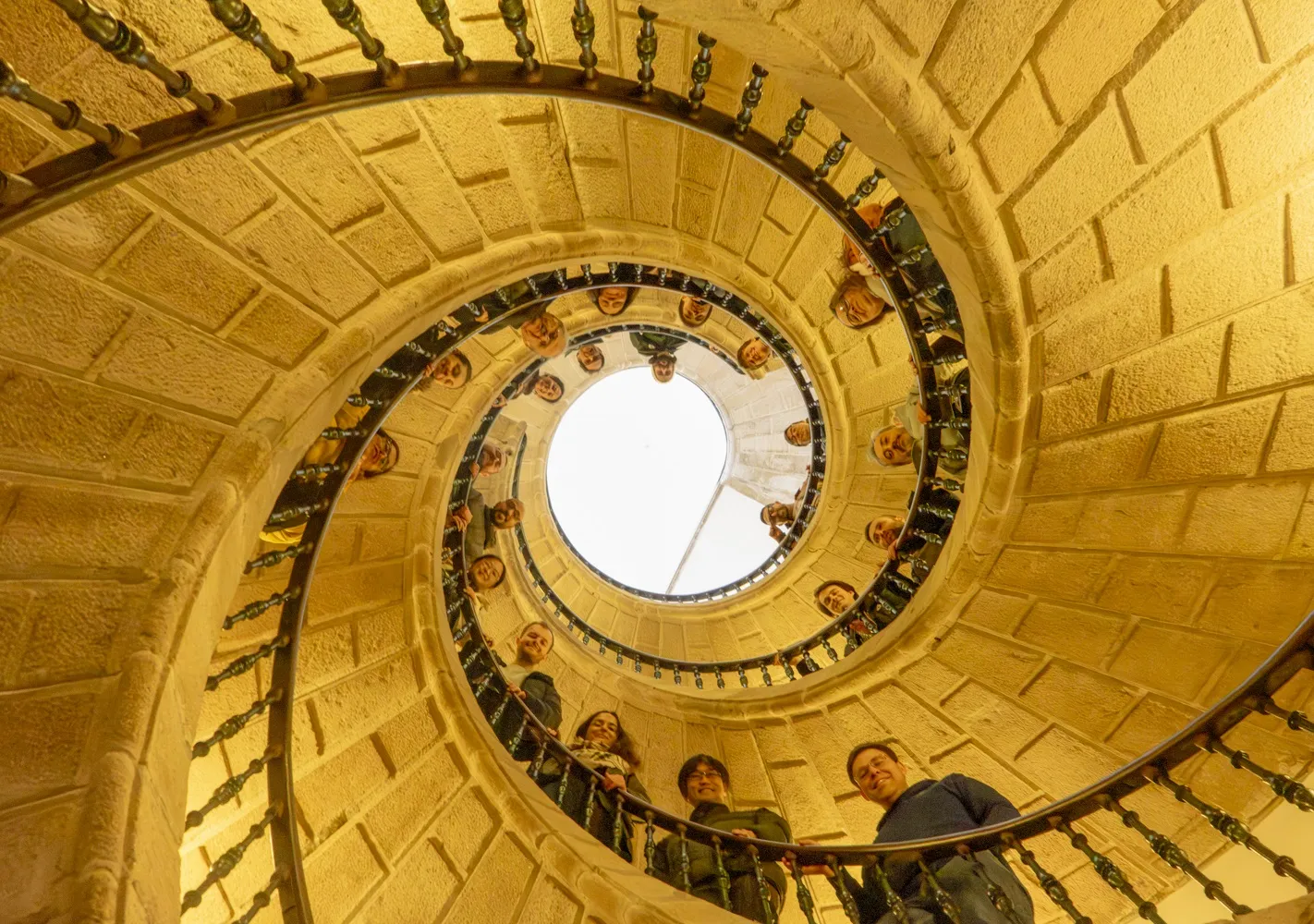![]()
- A meeting took place yesterday between the Ministry of Science, Innovation and Universities, senior officials of 15 Spanish Autonomous Communities and 42 members of the SOMM alliance
- IGFAE and other five centres and units of excellence “Severo Ochoa–Maria de Maeztu” showed the potential impact of the programme for Autonomous Communities
- “The support of autonomous communities is essential for Spain”, declares Luis Serrano, president of the SOMM alliance
Yesterday took place a meeting between the
Ministry of Science, Innovation and Universities, the Severo Ochoa and Maria de Maeztu centres and units of excellence and high-officials and counselors of 15 autonomous communities. The programme of excellence “Severo Ochoa - Maria de Maeztu” identifies and promotes the excellence in scientific research. Its objective is to give recognition to the research institutions at the forefront of their fields, and to boost their impact, international scientific leadership and competitivity.
The event took place at the Ministry, and was co-presided by the Minister Pedro Duque and by Luis Serrano, president of the SOMM alliance, the director of the Spanish
State Agency of Research, Enrique Playán, and the first vice president of SOMMa, Maria Blasco.
The minister of Science, Innovation and Universities, Pedro Duque, stressed “the firm support of the Government to the Severo Ochoa and Maria de Maeztu programme of excellence”, highlighting “the importance of the Autonomous Communities being able to host such centres, which would be to the benefit of their science and innovation systems.” The minister has declared, moreover, that “the level of the selection requirements will remain as stringent as it currently is, reason why the objective is that more excellent research institutions appear, something that requires of the support of the various governments.”
As declared Luis Serrano, “this meeting is symptomatic of a constructive and positive stance with regard to research in Spain. The support and interest of the autonomous communities for research is essential for Spain having expectations of becoming a country with a truly knowledge-based economy. The Severo Ochoa and Maria de Maeztu programme is a powerful lever of which autonomous communities can make use to strengthen their research institutions.”
The meeting in the Ministry had as object to emphasise the impact of the Severo Ochoa – Maria de Maeztu programme, its benefits for the consolidation of research of excellence, and its potential to help to sustain and to become a springboard for the research poles of autonomous communities. Six centres and units of research, among them the Galician Institute for High Energy Physics (IGFAE), have exposed their path towards obtaining the award and the impact that the prize has had. A round of questions and answers at the end of the act allowed the autonomous communities to learn how they can benefit from the programme.
During the event, the Director of IGFAE Carlos Salgado presented the case of this joint centre of the University of Santiago de Compostela (USC) and the Xunta de Galicia, distinguished as a María de Maeztu unit of excellence in 2017. This is the only accreditation in Galicia, and is allowing the institute to carry out an important strengthening of its scientific base, establishing new alliances with large international facilities such as the LIGO collaboration in gravitational waves. The main action for this strengthening is an ambitious recruiting program named IGFAE Global Talent that in just one year allowed to open new lines of research and attract external funding in highly competitive calls like Ramón y Cajal or La Caixa. A strengthening of the technical units of high-performance computing, management and communication, as well as a more dynamic implementation of the direction of the centre are also the reasons of these successes. On the other hand, thanks to the María of Maeztu distinction, IGFAE is joining the network of centres promoted by the Conselleria de Education of the Xunta de Galicia with a joint operation model, unique in the Galician system.
Apart from IGFAE, presented their case the
Institute for Cross-Disciplinary Physics and Complex Systems (IFISC, Balearic Islands), the
Galician Institute of High Energy Physics (IGFAE, Galicia), the
Gene Expression and Morphogenesis department (GEM-DCM2, CABD, Andalusia), the
Instituto de Neurociencias de Alicante (IN - CSIC – UMH, Valencian Community), the
Basque Center for Applied Mathematics (BCAM, Basque Country) and the
Instituto de Astrofísica de Canarias, altogether making clear the presence of research institutions of excellence over the whole of Spanish geography.
The physicist Daniel Pablos Alfonso will join the staff of the Instituto Galego de Física de Altas Enerxías (IGFAE), a joint centre of the University of Santiago de Compostela (USC) and the Xunta de Galicia, in the coming weeks. It will do so through the European Marie Sklodowska-Curie Postdoctoral Fellowships (MSCA-PF) programme, which funds the recruitment of scientists with a maximum of eight years of research experience. In the 2023 call, USC was the second most successful Spanish public university in this programme, with nine proposals selected.
Daniel Pablos, originally from Tarragona, received his PhD in 2016 under the supervision of Prof. Jorge Casalderrey at the University of Barcelona. Subsequently, he developed his postdoctoral career at McGill University in Canada (two years), followed by two years at the University of Bergen (Norway).
Later, he obtained the Fellini grant from the Istituto Nazionale di Fisica Nucleare (INFN), to develop from Turin (Italy) the JetQGP project, “Jet Quenching and the Nature of the Quark-Gluon Plasma”, where he stayed for three years.
Phenomenology of high-energy jets in heavy-ion collisions
Pablos explains that, throughout his career, his research has focused “on the phenomenology of high-energy jets in heavy-ion collisions”. Thus, he has developed “models with which we have been able to understand many of the observable characteristics of the modification of the jets due to the interaction with the medium formed in the collisions, the quark-gluon plasma”.
More recently, much of his activity has focused on “understanding and trying to mitigate the effects of selection biases in the analysis of the substructure of the jets, using for example Artificial Intelligence, as well as looking for ways to describe and measure the effect of the jet’s passage through the medium, whose apparent fluid behaviour leads us to expect the appearance of contrails”.
According to Pablos, “the surprising measurement of fluid-like collectivity effects in proton-proton and proton-nucleus collisions, very similar to those measured in heavy-ion collisions, is a challenge for the high-energy scientific community.
Thus, through funding from the MSCA-PF programme, Daniel Pablos will develop the AntScat project, “Interactions among Coherent Objects and the Origin of Collectivity in QCD at Colliders”, in which he will study the type of correlations induced by interactions between objects that preserve quantum coherence, such as dipoles or antennas. These interactions, he concludes, “will be included in effective kinetic theory models and parton shower models to quantify the importance of this new type of correlations in the description of the intriguing collectivity effects present in all types of hadronic collisions”.


